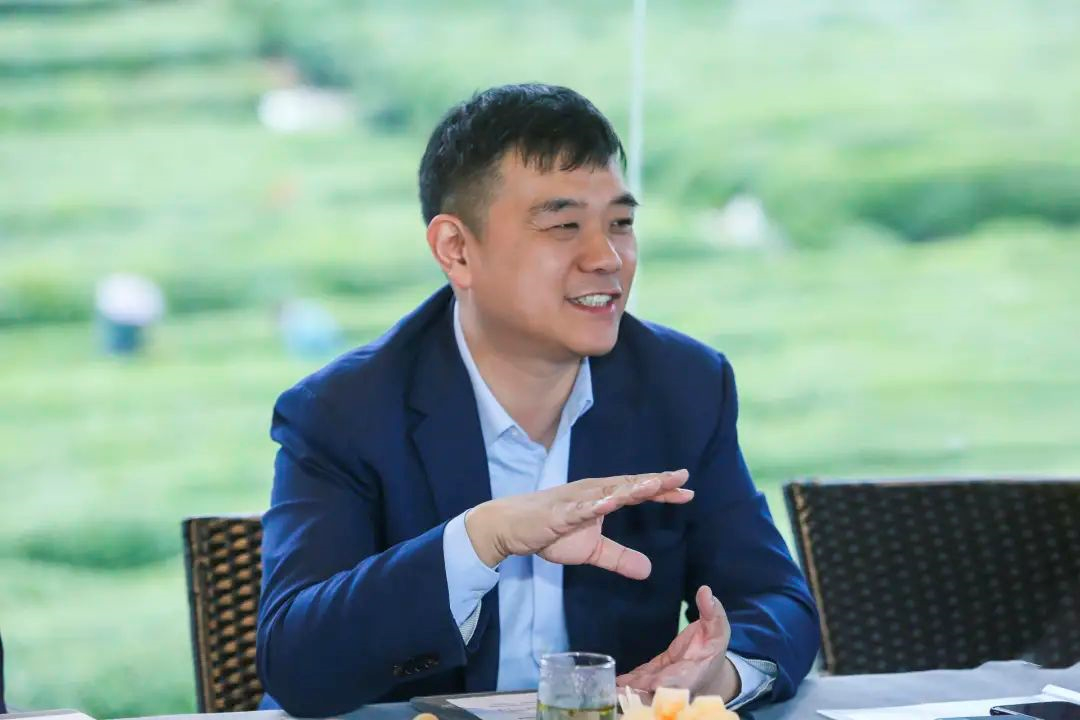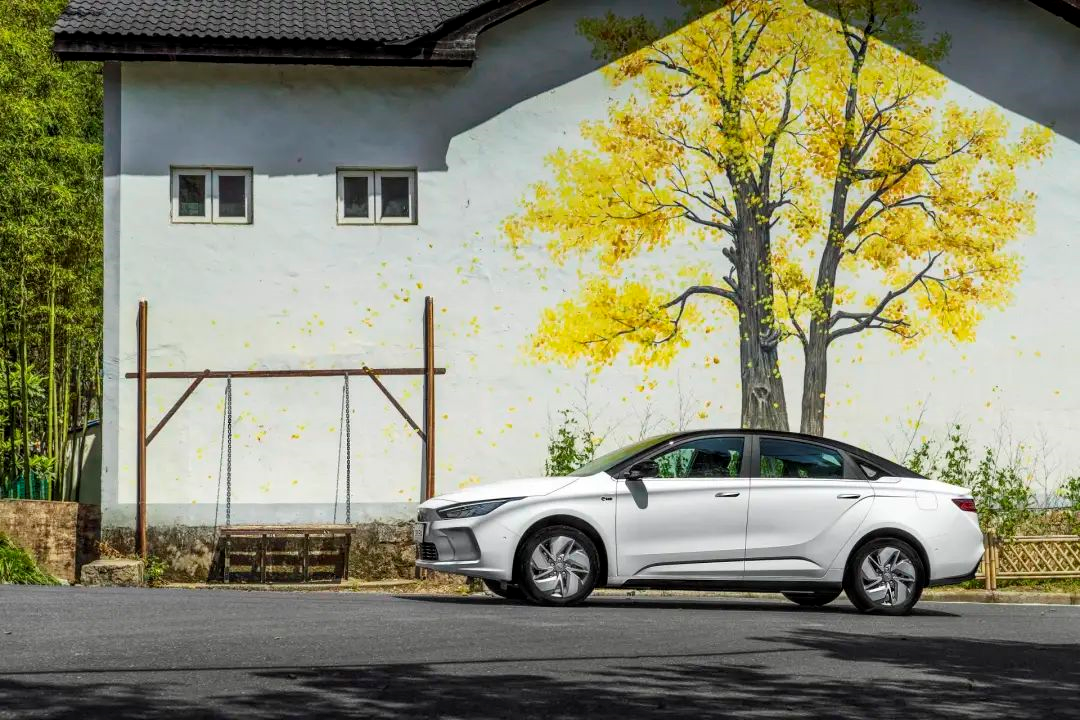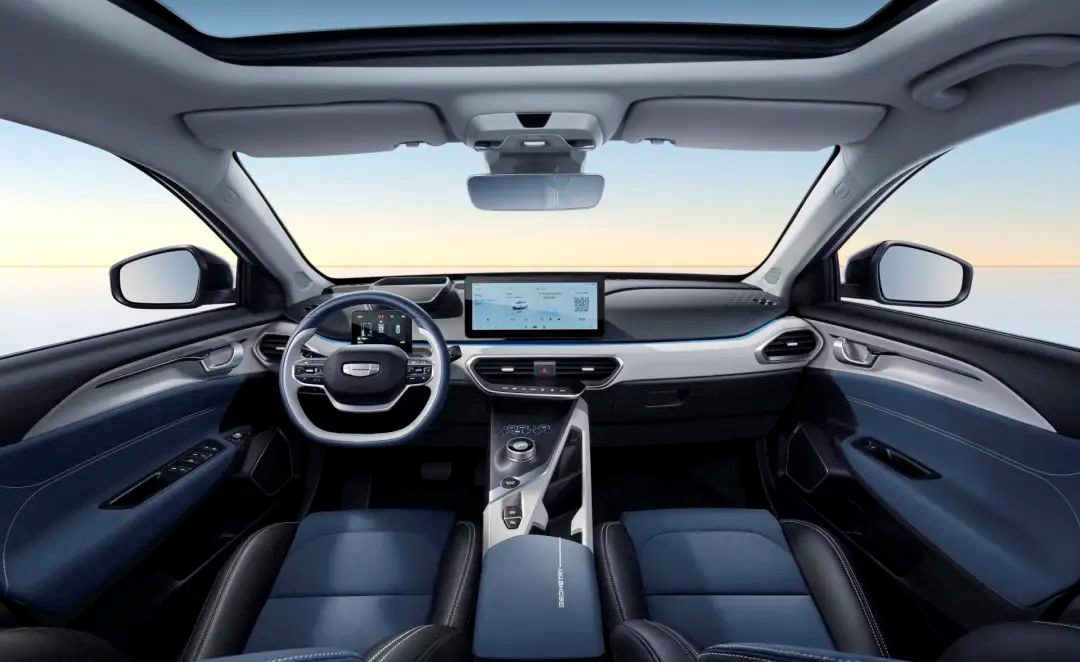Author: Huangshan
On April 12th, at the December Tea House in the outskirts of Hangzhou.
Outside the window, drizzling rain falls while tea farmers at the Yuanshuai Tea Garden in the distance brave the rain to pick tea leaves.
Inside the window, Lin Jie, the Senior Vice President at Geely Automobile Group, warmly greets a small group of media members for a tea-drinking exchange.
Lin Jie has another role this time: to lead the team responsible for designing and developing Geely’s cars. During the event, the media bombarded him with questions and suggestions like raindrops falling relentlessly, but Lin Jie patiently answered every one of them with sincerity.

At the communication meeting, the media was most interested in Geely’s new energy vehicle strategy, Geely’s relationship with Geometry and Ji Ke, and how Geometry will develop in the future. Lin Jie’s key answers are as follows:
-
Geely’s determination in energy conservation and emission reduction is unquestionable, and have laid out four technical routes: hybrid, plug-in hybrid, alternative fuels, and pure electric.
-
Geely brand and Lynk & Co brand will focus on hybrid, plug-in hybrid, and alternative fuel technical routes, while Geometry and Ji Ke brands will focus on the pure electric route.
-
Geometry is Geely Automobile Group’s pure electric brand, focusing on the 100,000-200,000 RMB high-end pure electric private market. Ji Ke is an independent brand, specializing in the 200,000 RMB and above high-end luxury performance market. Both brands will develop independently, but there is a possibility of merging in the future.
-
In the future, Geometry products will cover from micro to large-sized models, and all will be based on the vast architecture for research, development, and production, including A00 models, mainstream cars, and SUVs for the mainstream private user market.
-
Geometry motors will drive internal organizational change, break departmental walls, establish user-centric structures, and management mechanisms based on product and service to shape the brand reputation.
Reorganizing around User-Focused Approach
On April 11, 2019, Geometry officially debuted in Singapore.
Lin Jie said: “Today is Geometry’s 2nd anniversary, in which we have made a lot of reflection and actions internally with our performance. First of all, our original intention is to continue making good cars. Secondly, we need to break the departmental walls and truly establish a user-centric organizational structure and management mechanism. Another thing is to establish new marketing and channel models.“
Specifically, Geometry still starts with the actual needs of the masses to make new energy vehicles that fit their requirements. The product layout will be in the 100,000 to 200,000 RMB price range, and the target consumer group is the high-income and knowledgeable middle class in first and second-tier cities.
The slogan “user-centric” is not just a meaningless shout; Geometry broke its original organizational structure and established a user operation center, user development center, and product planning center separately, with the aim of quickly conveying user feedback and putting it into practice.
The functions of these centers are:
-
To establish a user operation center responsible for the planning and development of Geometry’s personal market channels and product marketing management work.- Establish a User Development Center responsible for Geometry brand planning, brand marketing IP creation, user lifecycle strategy formulation, and activity execution.
-
Establish a Product Planning Center responsible for pure electric market research, the promotion of a brand-new pure electric product ecosystem, and the planning, definition, and pricing of new products.
The biggest change in marketing and channels is to dispatch “City Operations Managers” to the TOP20 cities, responsible for all product marketing and user experience work in their respective cities, and their assessment is based on user satisfaction.
In the upcoming product planning, Geometry will cover micro to mid-size vehicles, all of which will be developed and produced based on the Haohan architecture, including A00 vehicles, mainstream sedans and SUVs, and fully enter the mainstream private user market.
The Geometry A Pro will be released in this year’s Shanghai Auto Show, and a new vehicle will be introduced next year. A new vehicle with the Haohan platform will be launched in two years.
New Geometry A Pro Upgrade
Geometry has always been promoting the brand slogan, “True Range, True Safety, and True Reliability.” Now, the “True” principle will continue to be implemented.
Taking the new Geometry A Pro as an example, it is equipped with the Nickel 55 NCM523 battery for the first time, which has a unique high density of 183 Wh/kg. The high-end version is equipped with a 70 kWh battery pack, and the NEDC benchmark range reaches 600 km.
At the same time, Geometry A Pro continues to use the SEM intelligent energy management system, original SOC range algorithm, integration of VCU vehicle controller and BMS battery management system, and based on big data and driving habits. It achieves a close to 100% accuracy between displayed remaining range and actual remaining range.

The Geometry A Pro is also upgraded to use an efficient three-in-one electric drive system, with a peak motor power of 150 kW, a comprehensive system efficiency that surpasses the industry by 5%, and a 20% reduction in volume.
The Geometry A Pro is also equipped with the Bosch iBooster braking system for the first time, with a braking distance of 37.1 meters per 100 km, and approximately 30% of the range comes from energy recovery during driving. The car also uses the Lotus exclusive chassis tuning for pure electric vehicles, with light steering at low speeds and stable steering at high speeds to balance driving comfort and pleasure.
The Geometry A Pro also has intelligent driving assistance functions, including the HUD head-up display, 540° AR chassis perspective, Bosch 9.3 driving assistance system, intelligent parking APA assistance system, EPS electric power steering, etc.In terms of safety development, the Geely Auto is jointly built by the CMA super matrix and the SEA vast (intelligent evolution experience) architecture development team, adopting a dual-loop FPC hardware thermal out-of-control detection scheme to ensure timely and reliable thermal out-of-control diagnosis.
In addition, in terms of BMS warning, battery “active and passive safety system”, etc., multiple redundant protections are used to avoid accidents.
In addition to performance and safety, the appearance and interior of the Geely A Pro have also been upgraded.

On the exterior, the Geely A Pro adopts a dual-color design with a black roof and a silver body. Both the front headlights and the rear through-stripe are designed with a smoky black.
On the interior, the seat material has been upgraded to suede fabric with a texture design. At the same time, the seat has been treated with waterproof, anti-fouling, and anti-oil coating technology, and has the characteristics of stain resistance and easy maintenance. It is also equipped with a sports antibacterial steering wheel, which can effectively inhibit bacterial growth and reproduction.
Currently, the Geely A Pro has only announced the pre-sale price, with a starting price of RMB 140,000 for the version with a cruising range of 430 km, and RMB 170,000 for the version with a cruising range of 600 km. The final selling price will be announced at the Shanghai Auto Show.
With so many visible and invisible upgrades, the pre-sale price of the Geely A Pro has not increased compared to the Geely A, and the actual selling price may be more positive.
This time, Lin Jie personally led the team, and Geely began to be different. It seems to have returned to two years ago, a new Geely, and set off.
This article is a translation by ChatGPT of a Chinese report from 42HOW. If you have any questions about it, please email bd@42how.com.
